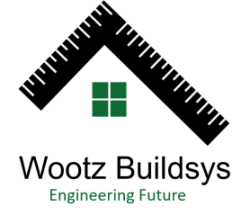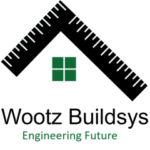
India’s construction industry is evolving rapidly to keep pace with urbanization, population growth, and the demand for sustainable solutions. Traditional building methods like brick-and-mortar or RCC (Reinforced Cement Concrete) have dominated for decades, but they often struggle to deliver speed, efficiency, and eco-friendliness at scale.
One modern solution rising to meet these challenges is Light Gauge Steel Frame (LGSF) construction. Over the last few years, this method has gained recognition for its ability to deliver durable, sustainable, and cost-effective buildings in shorter timelines. From affordable housing to commercial offices, LGSF is finding its place in India’s urban and industrial landscape.
So, what makes this method so appealing, and why is India beginning to embrace it? Let’s break it down.
What Is Light Gauge Steel Frame Construction?
Light Gauge Steel Frame construction involves using thin, cold-formed galvanized steel sections as the primary structural framework of a building. These sections are manufactured with precision in factory-controlled environments, ensuring accuracy and consistency.
Once fabricated, the components are transported to the construction site, where they are assembled like a puzzle. This reduces dependency on traditional labor-intensive processes such as masonry, plastering, and curing.
Unlike heavy structural steel used in large-scale industrial projects, LGSF uses lighter, versatile steel sections, making it particularly suitable for mid-rise buildings, housing, and modular projects.
Why India Is Turning Toward LGSF Construction
India faces multiple construction challenges: rapid urbanization, a need for affordable housing, a shortage of skilled labor, and a push toward greener building practices. LGSF addresses many of these issues effectively.
1. Faster Construction Timelines
Time is one of the biggest advantages of LGSF. Because the components are factory-made, on-site construction is reduced to assembly, which significantly cuts project timelines. For example, a housing unit that may take 10–12 months with RCC could be completed in 5–6 months with LGSF. This speed is crucial for large-scale housing projects and institutions where deadlines matter.
2. Structural Strength and Longevity
Despite being lightweight, LGSF is incredibly strong. It is engineered to meet strict load-bearing standards and can safely support multi-story buildings. It is resistant to termites, mold, and rot, unlike wood, and doesn’t crack or warp like concrete. With proper coatings and maintenance, these buildings can last for decades with minimal issues.
3. Eco-Friendly and Sustainable
India is seeing a strong push toward green construction, and LGSF fits perfectly into this vision. Steel is recyclable without losing strength, and factory production reduces construction waste significantly. Moreover, LGSF buildings support energy-efficient designs by enabling better insulation, which lowers heating and cooling demands. This contributes to long-term energy savings and aligns with global sustainability goals.
4. Cost Benefits in the Long Run
At first glance, LGSF may appear more expensive than brick or RCC construction. However, when you factor in faster delivery, lower labor costs, reduced material wastage, and minimal maintenance, the overall project cost is often lower in the long run. Developers benefit from quicker returns on investment, while owners save money over the building’s lifecycle.
5. Flexibility in Design and Expansion
LGSF is highly adaptable. Architects can design flexible layouts for homes, offices, or institutions. Large column-free spans are possible, which is ideal for commercial or industrial spaces. Additionally, modular features make future expansions easier without disrupting the existing structure.
6. Earthquake and Climate Resilience
India has several high-risk seismic zones, and earthquake resistance is a major concern. LGSF structures are lightweight yet strong, which allows them to absorb seismic shocks more effectively than heavy RCC buildings. They also perform well in extreme climates, offering resilience against heat, rain, and wind.
Applications of LGSF in India
The versatility of LGSF makes it suitable across a range of sectors. Here are some key applications:
- Residential Buildings: Villas, row houses, apartments, and affordable housing projects.
- Commercial Complexes: Office spaces, showrooms, retail outlets, and co-working hubs.
- Institutional Projects: Schools, colleges, hostels, and healthcare facilities.
- Industrial Buildings: Warehouses, workshops, and small-scale factories.
- Modular Construction: Site offices, worker accommodations, portable cabins, and disaster-relief shelters.
- Hospitality Projects: Resorts, guest houses, and eco-friendly vacation homes.
This adaptability is one of the strongest reasons why LGSF is being increasingly adopted in India.
Challenges in Adoption of LGSF
While LGSF offers significant benefits, its adoption in India still faces hurdles:
- Lack of Awareness: Many developers and homeowners are still unfamiliar with the technology.
- Perception of Weakness: Some people assume that because the material is “light,” it may not be durable.
- Higher Initial Cost: The upfront cost can be higher compared to brick construction, which discourages budget-conscious clients.
- Need for Skilled Workforce: Specialized design, fabrication, and assembly require training and expertise that are not yet widely available in India.
- Limited Supply Chain: Not all regions in India have easy access to LGSF suppliers and manufacturers.
Overcoming these challenges will require awareness campaigns, government support, and training programs to build a skilled workforce.
Future of LGSF in India
The future looks bright for light gauge steel frame construction in India. With the government promoting affordable housing schemes, smart city projects, and sustainable infrastructure, LGSF has a big role to play.
Trends that will accelerate its adoption include:
- Green Certifications: With LEED and IGBC certifications gaining traction, LGSF projects stand out as eco-friendly solutions.
- Prefabrication Growth: The prefab industry is booming, and LGSF complements modular construction perfectly.
- Smart Cities: Quick-to-build, efficient structures are essential for smart urban development.
- Industrial Expansion: Warehouses, logistics hubs, and factories increasingly require fast, scalable solutions that LGSF provides.
As demand grows, costs are expected to reduce, making LGSF more accessible for developers and homeowners alike.
Conclusion
Light Gauge Steel Frame construction is no longer just a niche technology—it is steadily becoming a mainstream option in India’s construction industry. Its advantages in speed, sustainability, strength, and flexibility make it a compelling choice for developers and homeowners alike.
While challenges such as awareness and higher initial costs remain, the long-term benefits far outweigh the hurdles. With India’s growing focus on urbanization and sustainability, LGSF is poised to transform the way we build, offering a faster, greener, and smarter alternative to traditional methods.
If you’re considering a project that demands efficiency without compromising on quality, LGSF could be the construction method that delivers exactly that.
FAQs on Light Gauge Steel Frame Construction
1. Is LGSF construction suitable for India’s climate?
Yes. LGSF structures are designed to withstand India’s diverse climatic conditions, including heat, heavy rains, and seismic activity.
2. How long does an LGSF building last?
With proper design and maintenance, LGSF buildings can last 50 years or more, making them comparable to traditional RCC structures.
3. Is LGSF more expensive than traditional construction?
Initial costs may be slightly higher, but the reduced timelines, minimal maintenance, and long-term durability make LGSF more cost-effective over time.
4. Can LGSF be used for high-rise buildings?
LGSF is best suited for low to mid-rise buildings. For very tall structures, it is often combined with other construction systems.
5. Is LGSF a sustainable choice?
Absolutely. Steel is recyclable, construction waste is minimized, and the design supports energy-efficient buildings, making LGSF a highly sustainable option.



